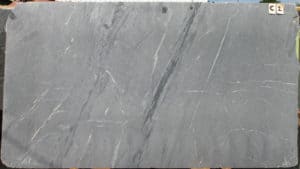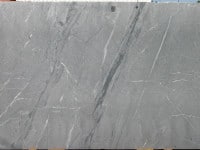
Soapstone is natural stone material that has been used for centuries in countertops. It’s milky appearance gives it a rustic feel when compared with the urbane and elegant look of granite or slate. Many homeowners love the natural charm of soapstone. This information will give you a better understanding of what this material is as well as the strengths and weaknesses of soapstone countertops.
Natural Stone Countertops
Soapstone counters are made from quarried stone. The stone is a steatite stone that includes chlorite, magnesite and dolomite. Most also contains quite a bit of talc which accounts for the milky or powdery look and feel of the stone. Slabs with lots of talc has been used by sculptors through the ages for its softness. Steatite with less talc is hard enough for use in countertops and fireplace surrounds.
The presence of talc produces a material that is softer to the touch than most natural stone countertop materials. However, that doesn’t mean it won’t stand up to the demands of the kitchen. Here’s a look at soapstone countertop pros and cons.
The Beauty of Soapstone
If you’re looking for a natural stone with an amazing amount of warmth, this is it. That’s one of the reasons that soapstone countertops are a favorite in country kitchens, though they can be included in styles from traditional to modern to eclectic. They offer outstanding design versatility.
The colors you’ll find in soapstone range from almost pure white with slight marbling to charcoal gray with nearly solid color. In between, you’ll enjoy a pleasant array of whites, off-whites, pearls and grays with rich marbling.
The Durability of Soapstone
While not as hard as granite, this material is more pliable. That means it is less brittle, so it won’t crack unexpectedly from stress or weight. In addition, soapstone is very non-porous, another important strength that sets it apart from granite, sandstone and slate. It doesn’t require the sealing that those materials do, and it is far less likely to stain when wine or oil are spilled onto it.
The primary care that soapstone requires is a periodic oiling that keeps it looking its best and produces a natural patina as the years go by. In other words, it is done for aesthetic rather than performance reasons.
Soapstone is Easy to Clean
Because it is non-porous, it cleans up with mild soap and a sponge or dish rag. This is a very sanitary countertop ,and a good choice for those who enjoy cooking with fresh fruits, vegetables and meats that are sometimes associated with e-coli bacteria.
Avoid Scratches and Chips
Because the stone is fairly soft, avoid cutting directly on it. Be careful not to drop heavy glass objects or cast iron pans on it. The softer nature of soapstone makes it nice to the touch but also represents its one main weakness.
Summary
Soapstone countertops are worth considering if you want natural stone that is low-maintenance and quite hardy. It’s limited in color from white to charcoal – you won’t find pinks, blues or greens for example—but if that range fits your design scheme, this high-quality countertop material should give you 20+ years of attractive, hardworking performance.
